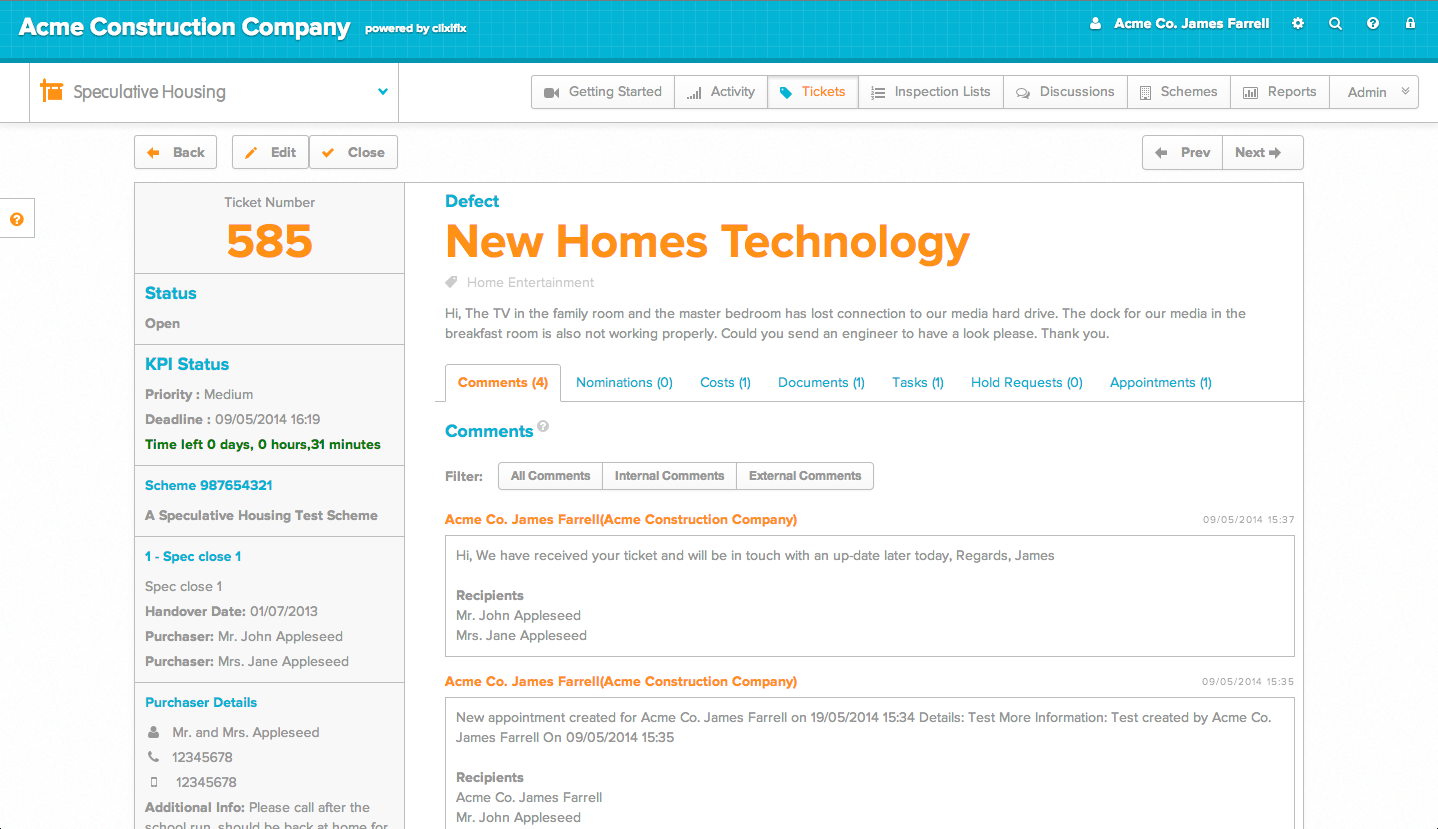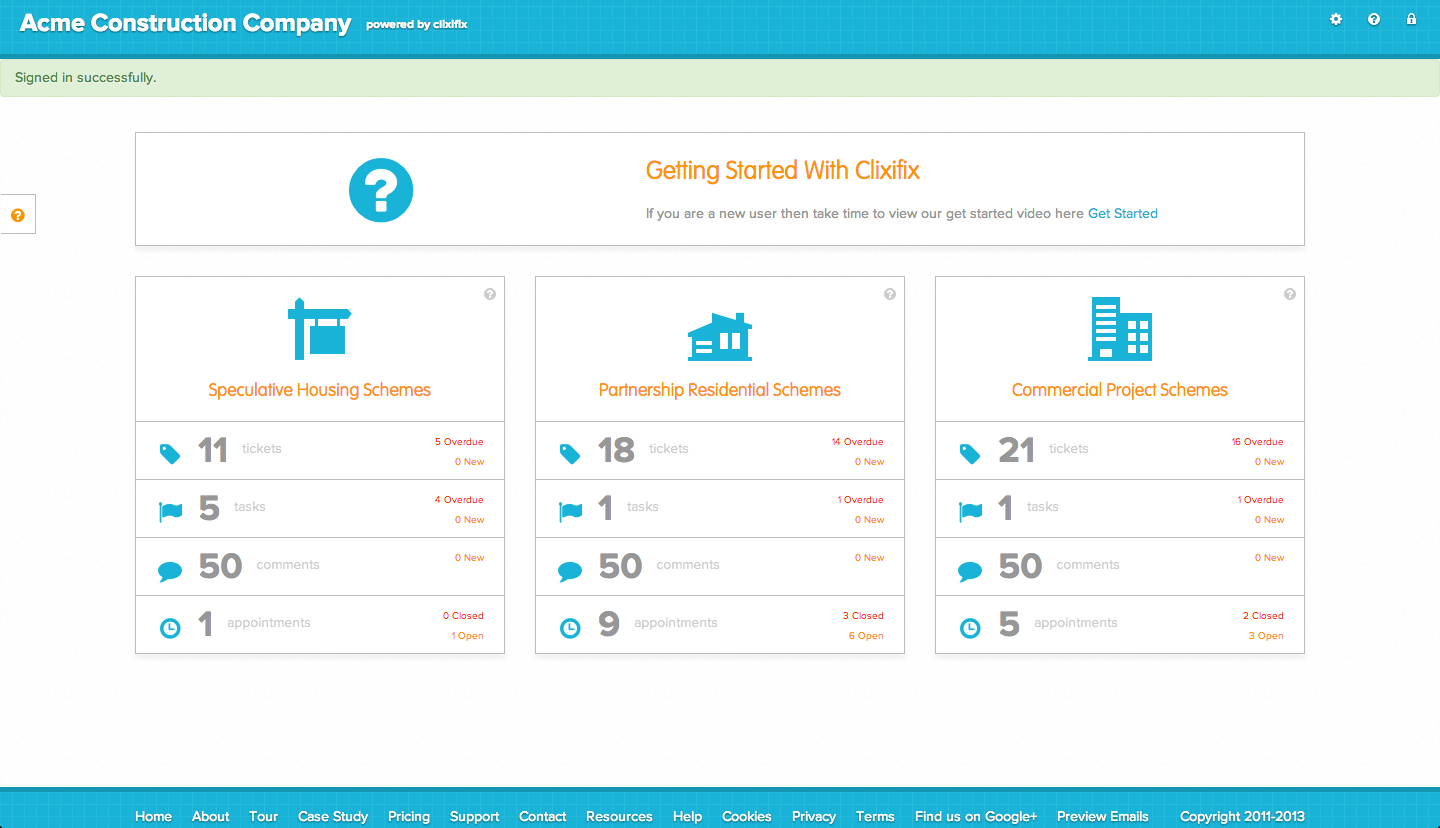GEORGE SELL meets the co-founder and managing director of clixifix, a customer care management application powered by a desire to offer better service to both house builder and home-owner.
James Farrell, co-founder and managing director of clixifix, began his career as a sales executive in the housing industry when he came to the UK from Ireland, but various marketing management roles and one global recession later, Farrell now finds himself very much on the after-sales side of the new homes business.
“I came over to Sunderland about 12 years ago to go to university, where I did a marketing degree part-time. I was also working as a sales executive for a company called Bowey Homes. That was my first foray into the house building industry, and I really enjoyed it,” he says. “Bowey Homes was a medium sized family-run house builder that prided itself on the quality and the specification of its product. As I progressed through the degree, I moved into the office and concentrated more on the software side of things. The company had invested in an application to choose the new home-owners’ standard colour choices, their selections, options, upgrades and so on.
“They trialled it for a couple of years and it took time, but we eventually got it up and running very successfully. Then the company was acquired by McInerney Homes, who were growing fast at the time by targeting medium-sized house builders with good land banks. Bowey Homes had quite a lot of the Duke of Northumberland’s land tied up and the Irish owners of McInerney were licking their lips. The takeover brought a new start and a new set of work colleagues, and I became marketing manager with McInerney Homes. It was very exciting at the time and we created a new website and a new brand.
Everything was going fantastically until the bottom fell out of the Irish market first, closely followed by things grinding to a halt over here.”
Farrell continues: “McInerney went in to administration and was wound up, and the next phase of my journey began with Barry Smith, who owns Partner Construction, here in the northeast.
They are principal contractors for affordable housing. I went across to their marketing department, which was a very different role and included getting involved in bids and setting up internal systems. We deployed some quite small teams with collaborative project management tools that we were all working with.
Because we were quite a small business – there were about 40 of us at the time – we could do that and it was quite responsive.
“But we started to grow, and the one real pinch point was the customer care side of things, particularly dealing with registered providers. This was something we’d never dealt with before. My background was dealing with software such as Coins, Sitestream and the like, which weren’t a dedicated customer care tool – they were primarily designed for accounting.”
Farrell explains the exacting standards that are required of contractors working in the public sector: “When you sign a contract with a registered provider, it ties you in to quite stringent response and repair times, so if a tenant rings up and says they have got a total loss of hot water, you are contractually obliged to respond within either four hours, 12 hours or 24 hours.
At the time we had no way of knowing whether we were responding within the agreed times, so Barry asked me if there was anything out there, similar to our project management tool, that we could use that would enable everybody to see, all of the time, what was happening with our customer care problems.”
After a considerable time spend looking for a ready-made solution – and not finding one – Farrell began devising what would go on to become customer care management application clixifix:
“I couldn’t find anything that I felt was suitable so we sat down and sketched out how the process would work and how to write the application. That was a little over two years ago, and since then we’ve experienced what I think is called ‘scope creep’.
We sat down and sketched it out on an A3 piece of paper – now it would go the length of two boardroom tables!”
He continues: “While going through beta testing, we were getting fantastic feedback, particularly from the providers who told us that none of their other contractors were using this and asking whether there was anything like it on the market? That prompted us to take the product outside the company and take it to the market, which brings us to where we are now.”

Example of the Ticket view
Farrell explains how the application works: “clixifix is a cloud-based application – there’s no software to install or download.
We designed the application so it would issue unique ticket numbers for every single defect or repair that is reported to a company.
Every defect falls in to one of four categories – it’s either an emergency, or a high, medium or low priority repair. Depending on the company, which can set its own internal KPI’s [key performance indicators], the response times could range from four hours to 28 or 60 days.
“Once you create the ticket, there is a chronological countdown until the ticket is closed or resolved. Every one of the team has a unique user name and password to log-in and they can see the dash board, which shows them how many tickets are open; it’s all in front of them and very transparent. The subcontractors are nominated on the ticket so they know how long they have to respond, and the process goes from there. On their dashboard, they will only see the jobs that they have been instructed for. There are lots of add-on features; for example you can upload support documents on-site from a mobile, you can create appointments on the move, you can add comments and so on.
“The application is written on a responsive framework so it can be used on mobile phones tablets, laptops and PCs. It knows what type of device it’s being viewed on and resizes accordingly.
The beauty of clixifix is that there is a clear audit trail from the very first contact from the purchaser or resident, which can’t be deleted. It brings transparency and accountability to the process.”
As well as social housing repairs, the application has obvious appeal to house builders for their snagging and repair process. Farrell says: “In terms of the housebuilding industry, new home buyers are given a user name and password by the builder, and if they have an issue after moving in, they can log in and report it, and then check the status of the ticket in real time until the defect is repaired.”
Farrell is keen to target a particular sector of the residential development industry with the product:
“There are a lot of small and medium house builders which have very little structure in terms of customer care. These companies haven’t got a great deal in place, so the idea of collaborating with their subcontractors until there’s a resolution on defects and repairs doesn’t frighten them. They know they want to improve but they need their hand held – that’s part of the service that we’re going to provide.
The construction industry in the UK is slowly coming round to the idea that you don’t need to have all your software in the office. There are a lot of companies who are wedded to very outdated systems, and even though they are starting to get busier as the market picks up, they’re not sitting down to look at how their systems and processes could be improved.
Our application is as much about the company culture as it is the software.”
Farrell adds: “When I go out to see new clients I stress that as well as the software they need to have a customer charter and a customer care policy in place. In some companies, the customer complaints file is still passed around the office like a poisoned chalice.
“Historically, and this has been one of my real frustrations at companies I have worked at, the sales and marketing teams would spend hundreds of thousands of pounds on attracting and then building a good rapport with your buyers, and then it all seems to unravel on the customer service side, when it comes to dealing with snagging and so on.
clixifix can help with that. We think that our product is ideal for companies building between 50 and 150 units per year – we’ve priced it very competitively, and we think these companies would see quick wins in a matter of weeks.
“We’ve only started our marketing drive in the last few months, and we’ve had some great reactions from the house builders we’ve spoken to, as well as approved contractors to registered providers. I have a very full diary for the next few weeks to go and introduce the system to clients.
It’s essentially a white label product, and as we continue to improve it we want to become the housebuilder’s customer care application, powered by clixifix. We hope that the term ‘powered by clixifix’ will become synonymous with excellent customer care. SH

Launchpad to Market Sectors
Fancy a quick demo see how the clixifix® platform could improve your business?
Fill in the form below and a member of the team will be in touch.